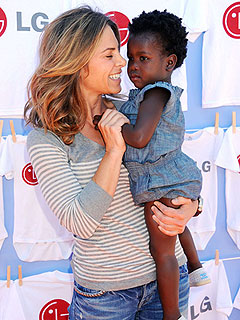Mary Harper, the Africa editor at the BBC World Service, is the author of “Getting Somalia Wrong? Faith, War and Hope in a Shattered State,” which was released in February 2012. While she is particularly interested in Somalia, which she visits regularly, Ms. Harper has reported from several other African conflict zones, including Algeria, the Democratic Republic of Congo, Liberia, Sierra Leone and Sudan. India Ink interviewed Ms. Harper at the Jaipur Literature Festival.
What are the occupational hazards of being a writer?
It is interesting how different the experience of being a writer is to being a journalist. As a journalist, you’re a writer as well, but I never realized that the two things would be so completely different. I’m a broadcast journalist so I normally write pieces that are about 30 seconds or one minute long so the challenge of writing a book was pretty big for me.
It was a slow start, but once I got into it, it was like I was a thing possessed, and I could not stop doing that. The research in a way was about 20 years of working in Somalia, and I did a lot of reading for it as well, which took about a year. But the actual writing of it took me about six months, and I did that at the same time as I was working for the BBC. So I had virtually no time for anything and had to be really focused.
What is your everyday writing ritual?
I couldn’t work at home, and I didn’t write my book at the BBC. I wrote it in two libraries in London because I kind of needed to be with other people who were working quietly. One of them is the library at the School of Oriental and African Studies, which was brilliant in terms of the resources.
My favorite place to really write was in the British Library. It’s funny because it’s quite easy to join and it’s free for all, but there was a place in the top floor called Africa room or something, and there was this chair in there that I thought of as mine, and if ever anyone was sitting on that chair I used to get angry. It was a public library so it was kind of terrible that I used to get possessive about that chair. But if someone else was sitting there, I would walk past them and try to stare them away.
Why should we read your latest book?
The image that most people have of Somalia is that it’s a land full of pirates, starving people and terrorists. I got so tired of writing the pirate stories. Even at the BBC, they called me the “pirate queen” because I was the one who used to interview the pirates and things. I got this reputation as a person who covers piracy, and it was driving me mad.
And it was actually things like that made me want to tell the story of Somalia that I saw whenever I went there, which didn’t match the way that it was portrayed. I wanted to talk about the amazing economic dynamism of people, the money that is in the country, the fact that Africa’s biggest money transfer company is based there, the fact that large parts of the territory that function as if they were independent countries, the fact that they have incredibly cheap and efficient mobile phone services — they use their mobile phones to pay money – all sorts of things like that that were just not being talked about.
It was almost like there was a conspiracy against telling those stories because they didn’t fit into that Western image of Africa as the dark, hopeless, conflict-ridden, famine-ridden continent.
How do you deal with your critics?
Certainly, writing about Somalia, you are definitely going to get some vicious criticism from Somalis because they are incredibly opinionated, and they are never afraid to tell you exactly what they think. I was expecting more – I was actually surprised by how well received my book has been by Somalis.
Of course, I’ll get very targeted specific attacks on certain subjects. But I think because I was so careful when I wrote my book, I feel comfortable with every single word . So even if someone doesn’t agree with me, I feel capable of explaining why I said the things I said.
Why does the Jaipur Literature Festival matter to you?
It’s just been the most magical experience. It’s interesting because the last literature festival I attended was this one in this part of Somalia called Somaliland. It’s a tiny little festival, but actually there are lots of parallels. And what I loved about that one is that in this country that is associated with war you saw how literature and art and poetry allow people to think about other things and actually start doing other things.
And here, just seeing the enthusiasm of the crowd — we were joking before we went on to the panel about Africa that no one’s going to come – and in fact it was packed! The fact that there is this thirst for knowledge and this thirst for stimulating debate all over the world is just so encouraging. And maybe this sounds a little silly and romantic, but you kind of wish that people would spend more time doing things like this than starting wars.
(This interview has been lightly edited and condensed.)











